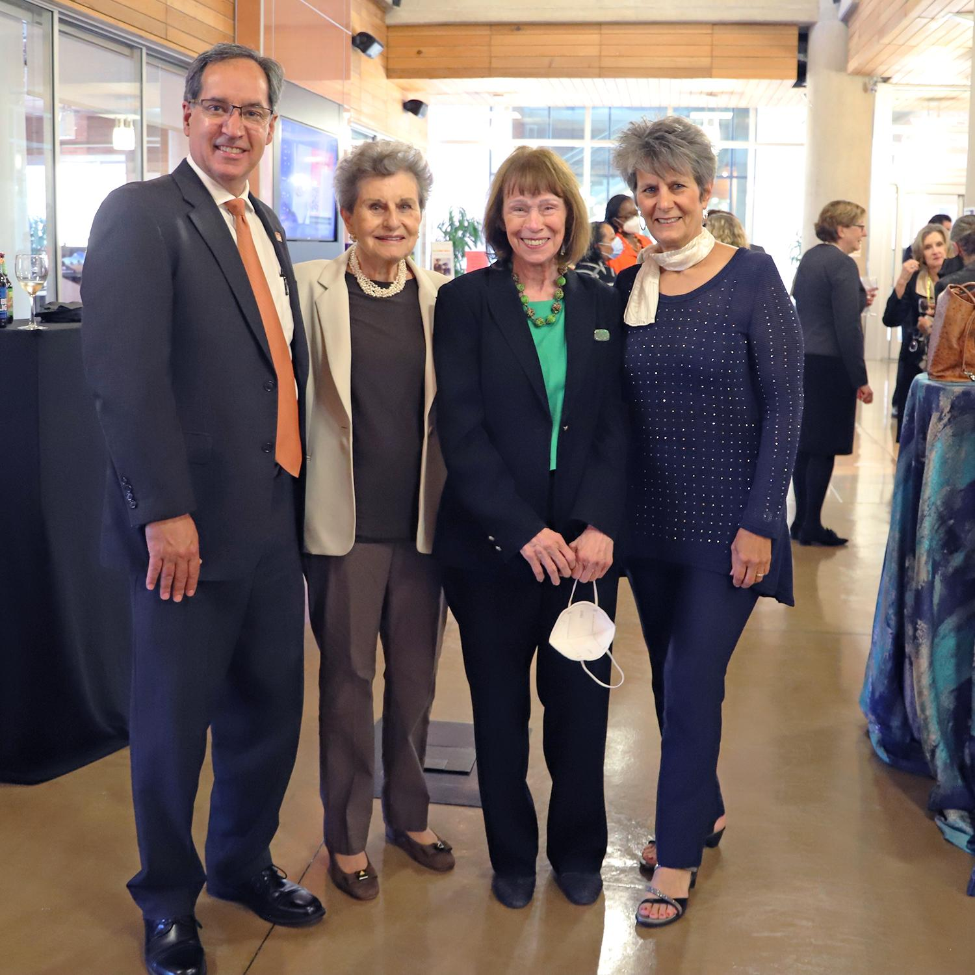Seeds of nursing research Inspiring nurse scientists



Patricia A. Grady, PhD, RN, FAAN, explored the past, present, and future of nursing science during the inaugural Jane and Robert Cizik Lecture on March 22 at Cizik School of Nursing at UTHealth Houston.
The keynote address by Grady, a neuroscientist and Director Emeritus of the National Institute of Nursing Research, capped a day of activities that included meeting and consulting with early career faculty and doctoral students about their research pursuits.
This annual series of lectures is made possible by a foundational $25 million gift from Jane Cizik and her late husband, Robert. The school was renamed in honor of the Cizik family’s 2017 gift, which also established endowments to support faculty research and student scholarships.
The COVID-19 pandemic delayed the inaugural lecture, which was well attended in person and virtually. “This is such a wonderful way for us to celebrate the various contributions that nursing research makes to our profession, both at the bedside and in the boardroom,” said Dean Diane Santa Maria, DrPH, MSN, RN, while thanking Jane Cizik and her daughter, Paula Cizik, who both attended the lecture.
Current health care challenges laid bare by the pandemic include the importance of fostering public health, effectively communicating scientific information, and building public trust, Grady noted in her presentation. Nursing is consistently recognized as the most trusted profession, and nurses must continue to foster that trust, she said.
“We’ve learned that science really isn’t as neat as we sometimes thought it was,” she said, adding that the accelerated pace of scientific discovery in the past two years made the above-mentioned challenges more acute. Scientists are accustomed to long-term studies that are replicated over time. “During this time, we are really learning the results of studies in real time…. We’ve really been building the body of knowledge as we go along.”
Grady traced the evolution of nursing science from Florence Nightingale’s groundbreaking infection control work in the 1850s to the National Academy of Medicine’s “Future of Nursing: 2020-2030” report, which emphasizes nurses’ vital role in creating a more equitable health care system.
She touched on areas where the patient- and family-focused practice of nursing can have great impact on scientific research, including the fields of symptom science, wellness, disease self-management, and end-of-life palliative care.
In presenting illustrative examples of nursing science’s contributions to improvements in patient care, Grady discussed the Braden Scale for Predicting Pressure Sore Risk, a tool developed in the 1980s by Barbara Braden, PhD, RN, FAAN, and retired UTHealth Houston Professor and prior Associate Dean of Research Nancy Bergstrom, PhD, RN, FAAN. Subsequent scientists used mRNA sequencing of patient tissues to refine the scale.
Similarly, Grady shared how an incidental finding from her early stroke research, in which she described potentially transportive properties of cerebrospinal fluid, was unexpectedly cited in a 2016 Scientific American article 30 years later. Advances in technology had enabled the next generation of scientists to verify her findings and build on her work.
“Seeds planted grow. Persistence pays off,” she advised early career nurse scientists beginning careers of discovery.
Sherri Deatherage Green



